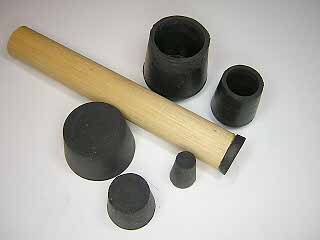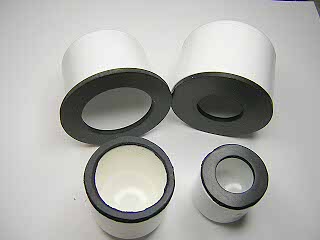Home-made Camera Repair Tools
Most of the tools needed to work on cameras can be purchased at a hardware or department store. You obviously need small screwdrivers and tweezers. You almost can't have too many screwdrivers if you work on a lot of cameras. Camera designers seem to delight in creating non-standard size screws. To get a good fit and avoid damaging the head, it is often necessary to grind a screwdriver tip to make a good fit.
In addition to screwdrivers, you need some type of adjustable spanner wrench in order to remove slotted retaining rings around shutters and lenses. Adjustable spanners for cameras and lenses are not usually available in hardware stores. You can purchase them from Fargo enterprises (www.microtools.com). I've also seen several people selling spanners on e-bay for reasonable prices. Every now and then you encounter a ring that can't be removed by an adjustable spanner. In that case, you have to improvise a spanner to fit. Some of my home-made spanners are shown below.
Another type of tool that is indespensible is a "friction" tool. This is anything that you can use to get a tight grip on a part and turn it. Friction tools are the best tools to use since there is little chance of scratching or damaging the part.
 |
This picture shows three home-made spanners. On the left is a "T" style wrench cut from a paint scraper by hand with a Dremel tool. It may not be very pretty, but it works great. A tool like this is needed on shutter jamb nuts that are partly blocked by the film gate. A normal adjustable spanner will usually hit the edges of the film gate, or won't be able to reach the slots on the nut.
In the center is a wrench made from a plumbing flared fitting. I ground down the edge leaving two small tips. Different diameters of pipe can be used for different size wrenches.
The tool on the right is the simplest of all. I cut off a piece of brass shim stock and held in with a pair of locking pliers. This tool is perfect for reaching down into a TLR (like the Ciro-flex). You can cut different lengths of shim and grind little tips if needed. This really works as well as any comercially made adjustable spanner I have and it cost practically nothing.
|
 |
This picture shows some friction tools. At the bottom are three rubber stoppers. I went to the hardware store and bought one each of every size they had for a total cost of less than $20. I've heard that gum rubber stoppers work even better, but this is what I found and they work just fine. Cleaning these with alcohol helps make them stickier.
At the top are two furniture leg cups. Like the stoppers, I bought these at a hardware store. These are good for removing lenses where some part of the lens sits higher than the retaining ring. The hole in the middle allows slipping the cup down onto the ring without leaving any rubber on the lens.
In the middle is the classic dowel with rubber type tool. You cut off a piece of wooden dowel, or broomstick, and glue a pice of rubber on the end. For this tool I cut a slice of rubber off of a rubber stopper and attached it with contact cement.
|
 |
One problem with rubber stoppers and furniture leg cups is that they compress when you push down on them. Sometimes you can't get enough downward force to turn the part. These tools solve that problem by attaching a bushing or washer to something sturdy. The three tools on the left are made using copper plumbing fittings. The flared fitting gives you a big handle to hold onto. The other tool is a wooden cabinet knob with a fender wahser glued to it.
|
 |
These four tools work like the furniture leg cups but are much stronger and won't collapse when you press down on them. I took some PVC pipe end caps and stuck a fender washer on the end with Super Glue. The end caps all had some raised lettering on the edge. I removed the lettering with a file and then sanded them flat and smooth.
|
|



